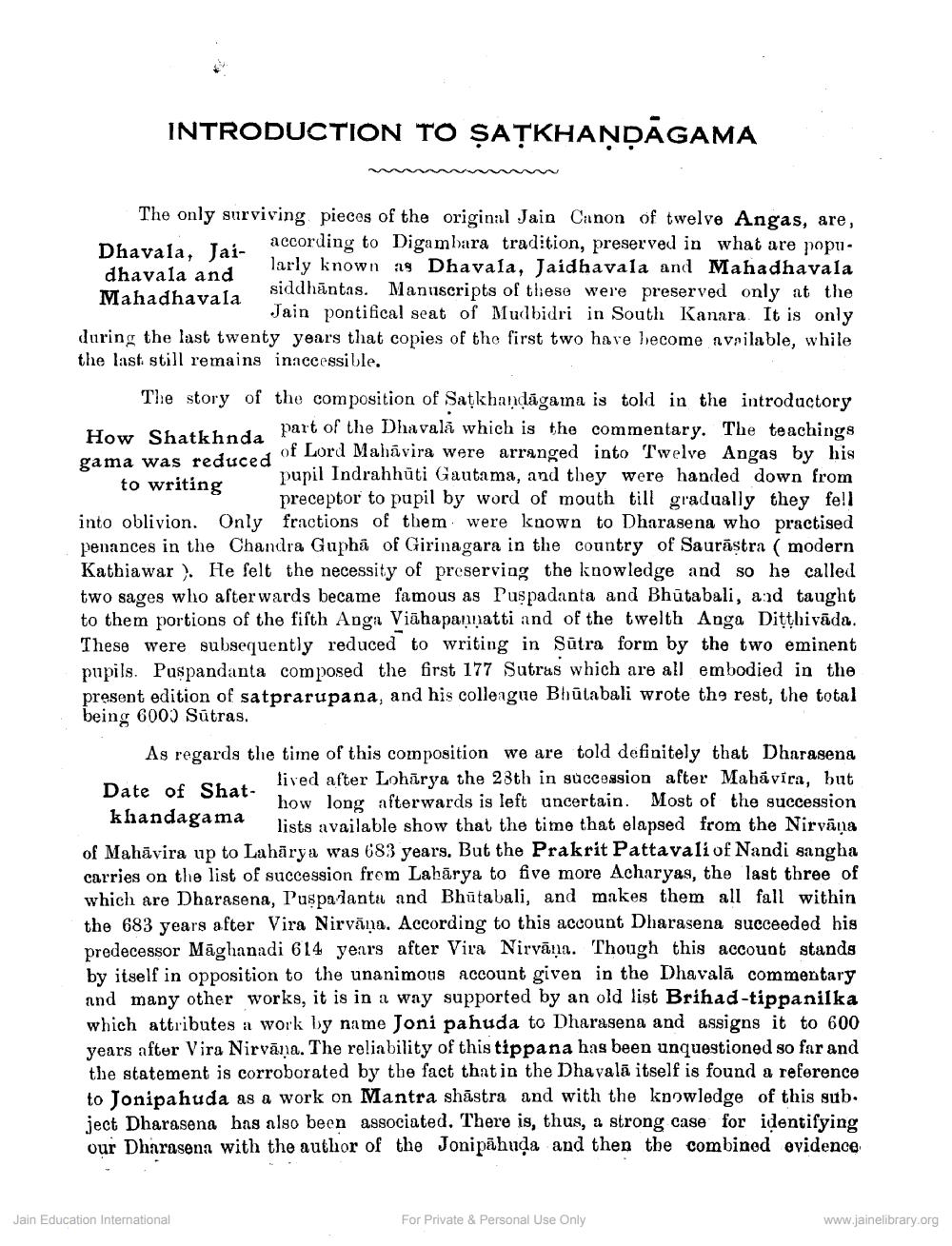________________
INTRODUCTION TO SATKHANDAGAMA
The only surviving pieces of the original Jain Canon of twelve Angas, are, according to Digambara tradition, preserved in what are popu Dhavala, Jaidhavala and larly known as Dhavala, Jaidhavala and Mahadhavala Mahadhavala siddhantas. Manuscripts of these were preserved only at the Jain pontifical seat of Mudbidri in South Kanara. It is only during the last twenty years that copies of the first two have become available, while the last still remains inaccessible.
The story of the composition of Satkhandlagama is told in the introductory How Shatkhnda part of the Dhavala which is the commentary. The teachings of Lord Mahavira were arranged into Twelve Angas by his gama was reduced pupil Indrahhüti Gautama, and they were handed down from to writing preceptor to pupil by word of mouth till gradually they fell into oblivion. Only fractions of them were known to Dharasena who practised penances in the Chandra Gupha of Girinagara in the country of Saurastra (modern Kathiawar). He felt the necessity of preserving the knowledge and so he called two sages who afterwards became famous as Puspadanta and Bhutabali, and taught to them portions of the fifth Anga Viahapannatti and of the twelth Anga Diṭṭhivada. These were subsequently reduced to writing in Sutra form by the two eminent. pupils. Puspandanta composed the first 177 Sutras which are all embodied in the present edition of satprarupana, and his colleague Bhütabali wrote the rest, the total being 6000 Sutras.
As regards the time of this composition we are told definitely that Dharasena lived after Loharya the 28th in succession after Mahavira, but how long afterwards is left uncertain. Most of the succession lists available show that the time that elapsed from the Nirvana of Mahavira up to Lahirya was 683 years. But the Prakrit Pattavali of Nandi sangha carries on the list of succession from Laharya to five more Acharyas, the last three of which are Dharasena, Puspadanta and Bhitabali, and makes them all fall within. the 683 years after Vira Nirvana. According to this account Dharasena succeeded his predecessor Maglanadi 614 years after Vira Nirvana. Though this account stands by itself in opposition to the unanimous account given in the Dhavala commentary and many other works, it is in a way supported by an old list Brihad-tippanilka which attributes a work by name Joni pahuda to Dharasena and assigns it to 600 years after Vira Nirvana. The reliability of this tippana has been unquestioned so far and the statement is corroborated by the fact that in the Dhavala itself is found a reference to Jonipahuda as a work on Mantra shästra and with the knowledge of this subject Dharasena has also been associated. There is, thus, a strong case for identifying our Dharasena with the author of the Jonipähuda and then the combined evidence
Date of Shatkhandagama
Jain Education International
For Private & Personal Use Only
www.jainelibrary.org




